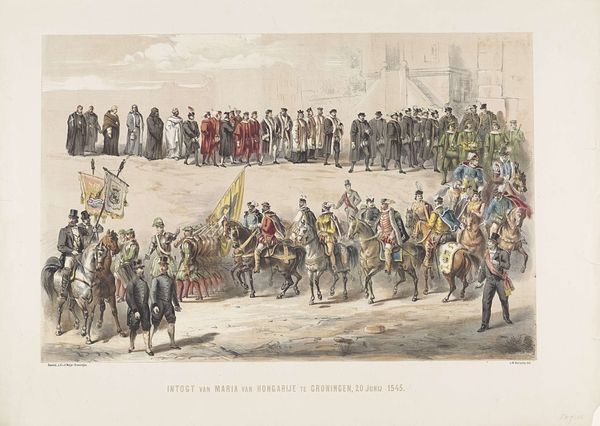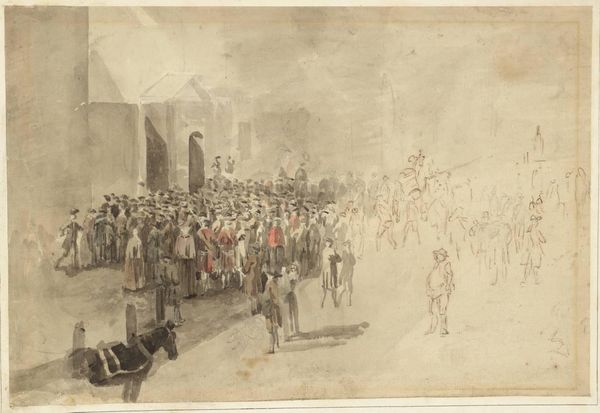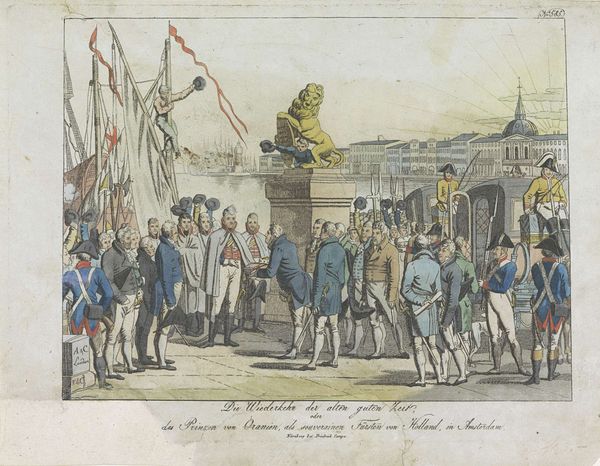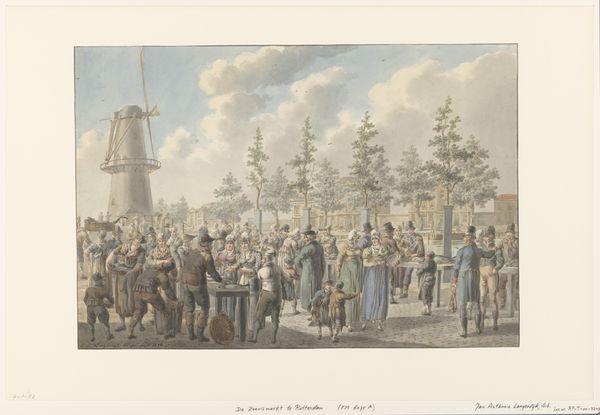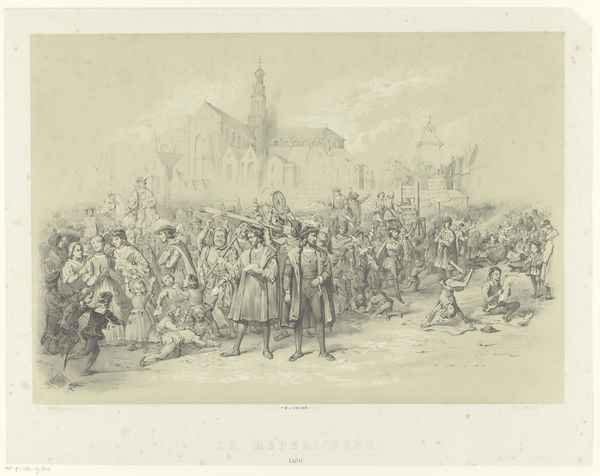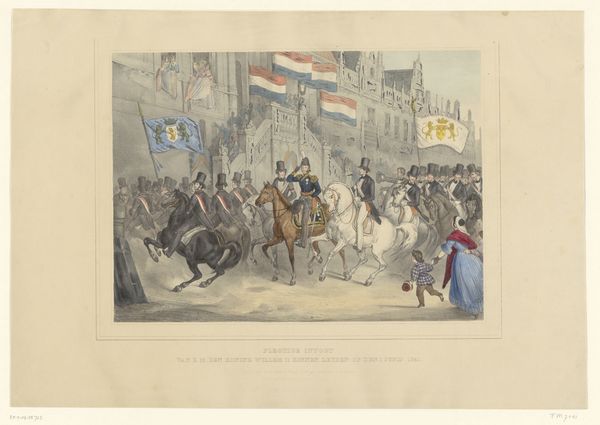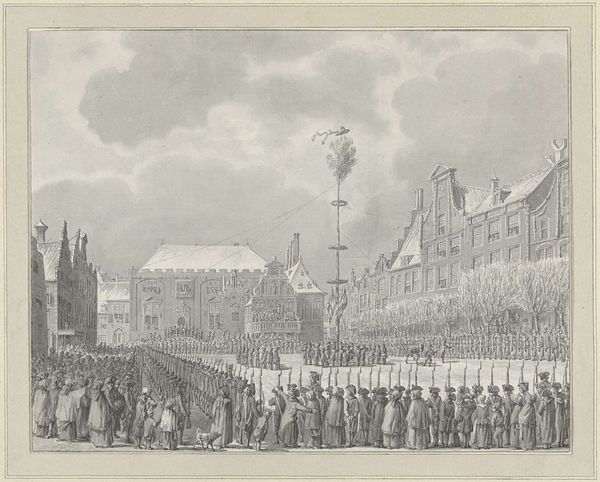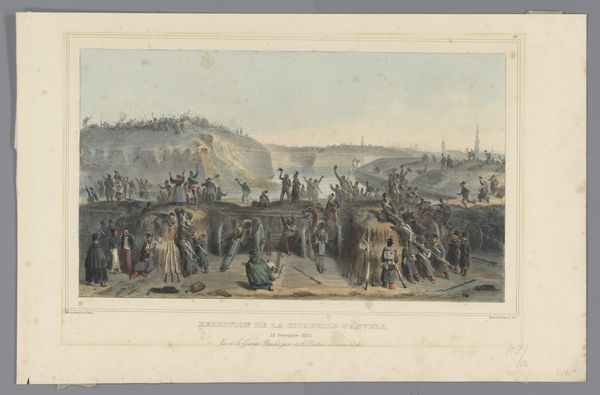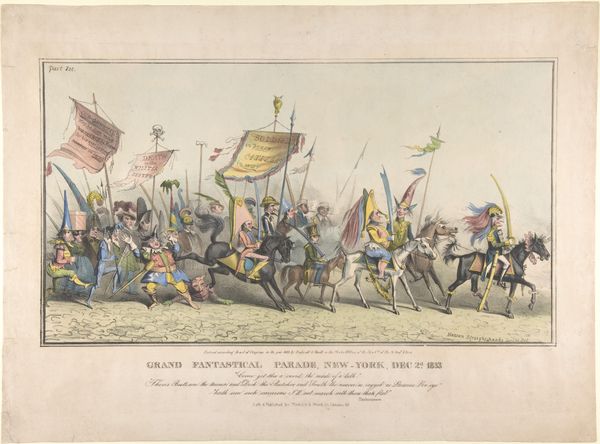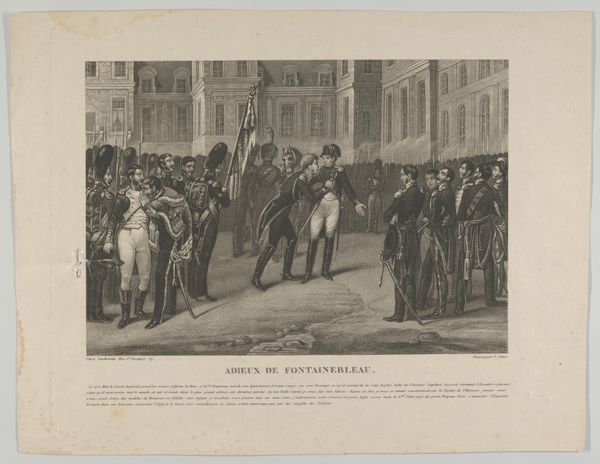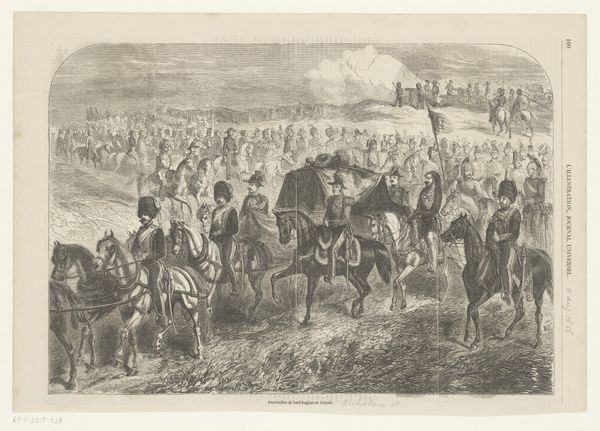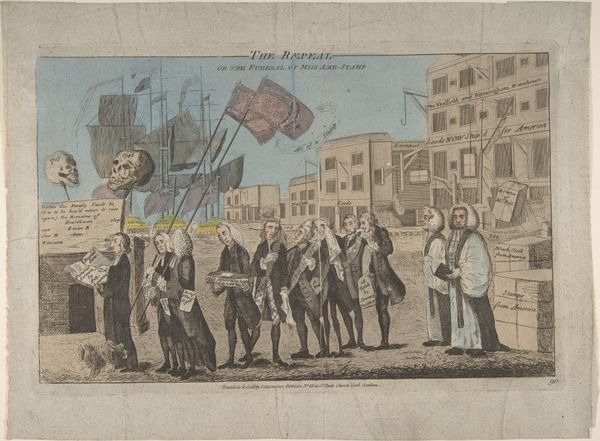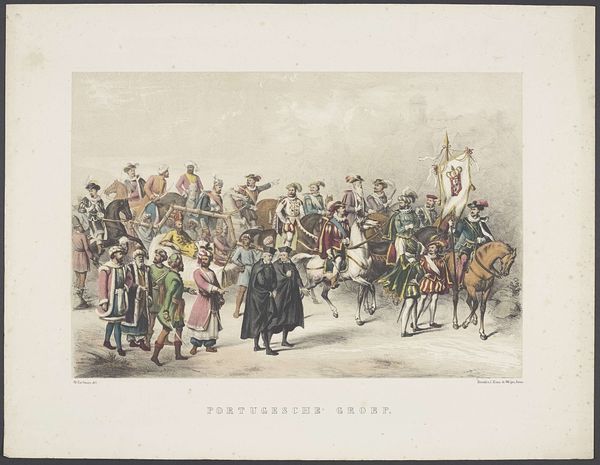
print, watercolor
# print
#
figuration
#
watercolor
#
cityscape
#
watercolour illustration
#
genre-painting
#
history-painting
#
watercolor
Dimensions: height 325 mm, width 462 mm
Copyright: Rijks Museum: Open Domain
Curator: Up next, we have "Historical procession on the occasion of the VOC," a watercolor print by A. van Groeneveldt, likely created between 1834 and 1883. What are your initial thoughts? Editor: Well, initially it evokes a very theatrical atmosphere, doesn't it? The sepia tones lend an air of faded glory, like a play being enacted under a hazy, historical light. All those people... What do you make of the symbolism? Curator: It's thick with it! Beyond the obvious grandeur of celebrating the Dutch East India Company, I see layers. The sheer number of figures suggests a collective identity, a visual manifestation of national pride…perhaps even a bit of hubris? What reads to me as faded glory I also take to mean maybe they are acknowledging something that isn't so bright and new, and perhaps already corrupted. Editor: Absolutely. The procession itself—a line moving forward—speaks to a specific type of progress. The figures become symbols of national identity, power, and expansion...that progress has dark shadows, but they remain largely unacknowledged here, I suspect. What strikes me most is the children at the front; innocents perhaps representing the future or a false picture of the reality the VOC brought. Curator: And the way the artist employs watercolor, creating that ethereal quality... It's as if the event is both present and distant, real and mythical, the artist seems to know there will be a complex historical memory. Groeneveldt seems to be asking what that means for the viewer now, even then. What’s sustained? What’s lost? The symbols they represent—are they understood, transformed, or ironically charged now? Editor: You're right; the choice of medium really adds to that sense of looking back through time, doesn’t it? Everything is filtered through memory and distance. This isn't a snapshot of history, it's a meditation on its performance, its meaning. Curator: Precisely. The way we parade our triumphs shapes the stories we tell ourselves. What elements remain the same in our national consciousness? What's revised, reconsidered, or buried completely? The echoes in the parade carry lessons as much as pride. I wonder if there's some criticism within it. Editor: A fascinating ambiguity to explore. The work becomes less a depiction and more an invitation to examine our relationship to the past and to see where and what parts remain—a kind of procession for the soul to trace, I suspect!
Comments
No comments
Be the first to comment and join the conversation on the ultimate creative platform.
